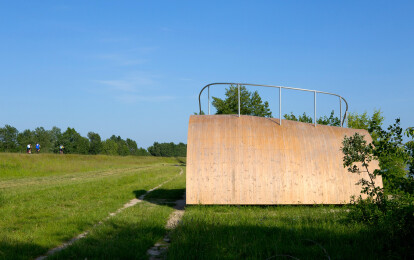“The goal is to give the new architect knowledge about society, the individual and the environment, and to develop the individual skills for creative clarification and visual expression; - to be able to cope with any situation one will meet as an architect.” Professor and founder Svein Hatløy
Bergen School of Architecture was established in 1986 in Bergen as an educational alternative to the two public architecture schools in Norway.
The school was approved by the Ministry of Education in 1990 and graduated its first class of graduate architects in the spring of 1991. BAS is a private foundation and one of three approved architectural studies in Norway. BAS educates masters in architecture, a five-year professional study.
For the western region in Norway and Bergen in particular, it is essential that architects are trained that have basic knowledge of the local building tradition and climate.
Now the school is located in Sandviken in Bergen. The school has transformed a former industrial estate with a grain silo and deep water quay into studios and workshops for an architecture school.
For an impression of the life at BAS, read an article in a local newpaper from 2011, in connection with the 25th anniversary at BAS. Article from Bergensavisen.
The buildings serve as the base for the school.
During the course, students go on a number of long field trips on the west coast of Norway and other parts of the world.
Facts: 150 students. A permanent teaching team that includes professors, associate professors and teachers. A network of teachers and examiners which includes practicing architects and educators from around the world.
BAS has as of autumn 2015 graduated 483 architects.
Academically, BAS is based upon the idea of the subject in the center
and Open Form / inclusive architecture, a form theory established by Oskar Hansen (Poland) and continued in Norway by former Rector, Professor Svein Hatløy. The scientific approach to architecture requires unconventional teaching methods and makes BAS an educational alternative. Meanwhile, the BAS study a holistic program for sustainable development that focuses on landscape and climate as the basis for the architecture.
ABOUT THE BAS-ALTERNATIVE:
“Both the curriculum and the student work that I have seen at Bergen School of Architecture points towards an anthropological and ecological architecture, which is the most important direction that I think architecture should take advance in the current phase of western culture. A culture threatened by false techno-economic rationalism, consumerist materialism, shallow internationalism, and detachment of architecture and life at large from their mytho-poetic essence.”
Projects with Products from Bergen School of Architecture
Is this your brand? Contact Archello to claim it and manage your brand page.


